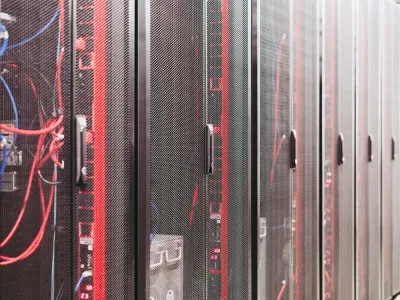Legislative Update: Protecting electric ratepayers from the costs to serve data centers

This article is the next in a series from CUB discussing the ongoing conversations around data centers and their potential impacts on Minnesota’s residential ratepayers. Find other entries in the series below.
How Xcel's land sale became a $65 million flip for private investors
CUB spearheads nation-leading legislation to protect ratepayers from the costs to serve data centers
The growth of data centers is a hot topic in the energy world. Tech companies like Microsoft, Google, Amazon, and Meta (the “big four”) are building super-large data centers at sites across the country, goosed by an arms race in artificial intelligence. Powering the equipment within these data centers, and keeping it cool, requires enormous amounts of electricity and water. Despite optimism among some in the industry, evidence from other states suggests that households and other ratepayers may end up bearing a portion of the costs caused by new data centers.
A single Amazon data center being built in Sherburne County will require 600 MW of power – roughly equivalent to the power demand of an entire city – and at least 10 huge data centers are in some stage of planning in Minnesota. According to information published by the Star Tribune, together these 10 sites could require more than 3,600 MW of power – about six times the output of the Monticello nuclear power plant.
Experience from other states shows that building new power generation and infrastructure to serve large data centers can lead to higher electric rates for other utility customers. A study conducted for the Virginia legislature found that, while it is not impossible to accommodate data center electric load without shifting costs to other ratepayers, in reality, doing so is a narrow needle to thread. Consumer advocates in Oregon say that residential electric rates have increased due to the growth in data centers there.
Data center companies, utilities, and consumer advocates agree: Data centers should pay their fair share for electricity. CUB has asked for protections to be put into state law to make sure that households and businesses are not impacted by the growth of data centers on Minnesota’s electric grid.
These ratepayer protections were incorporated into a bill being carried by House Energy DFL Chair Patty Acomb (HF 2928) last week. (Ratepayer protections were amended by Section 10 of this amendment adopted onto the bill.)
The bill seeks to ensure that:
- Large data centers pay for their full cost of service, including their share of maintaining the utility system that existing ratepayers already support, as well as any additional costs incurred to increase power generation and supply data centers directly.
- Large data centers cover the cost of infrastructure built to supply them, even if their electricity need is lower than expected or the data center terminates operations.
- When setting rates, the Public Utilities Commission considers large data centers as a separate class of customers. That will increase transparency about the true cost to serve data centers, which are fundamentally different from other types of large industrial customers.
- The electricity supplied to data centers meets the state’s renewable and carbon-free electricity standards.
CUB also supports a proposal included in Chair Acomb’s bill for data centers to contribute to weatherization for low-income households, similar to the longstanding conservation programs run by Minnesota utilities.
While the specific legislative language may be adjusted as bills move through the process, it is an important and necessary foundation for protecting Minnesota ratepayers.
CUB is engaging in ongoing legislative conversations on this topic, and you can help:
- Reach out to your representatives in the Minnesota House and Senate and urge them to be sure ratepayer protections are included in any data center legislation that goes forward this year. You can find your legislators and their contact information here.
- Thank Chair Acomb for protecting Minnesota ratepayers.
If you have questions about how data centers could impact your monthly electric bill, contact CUB today.